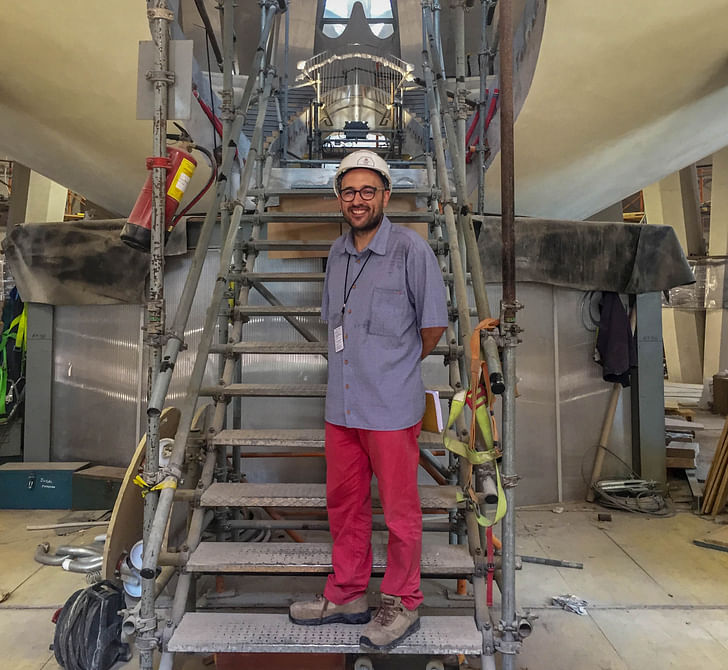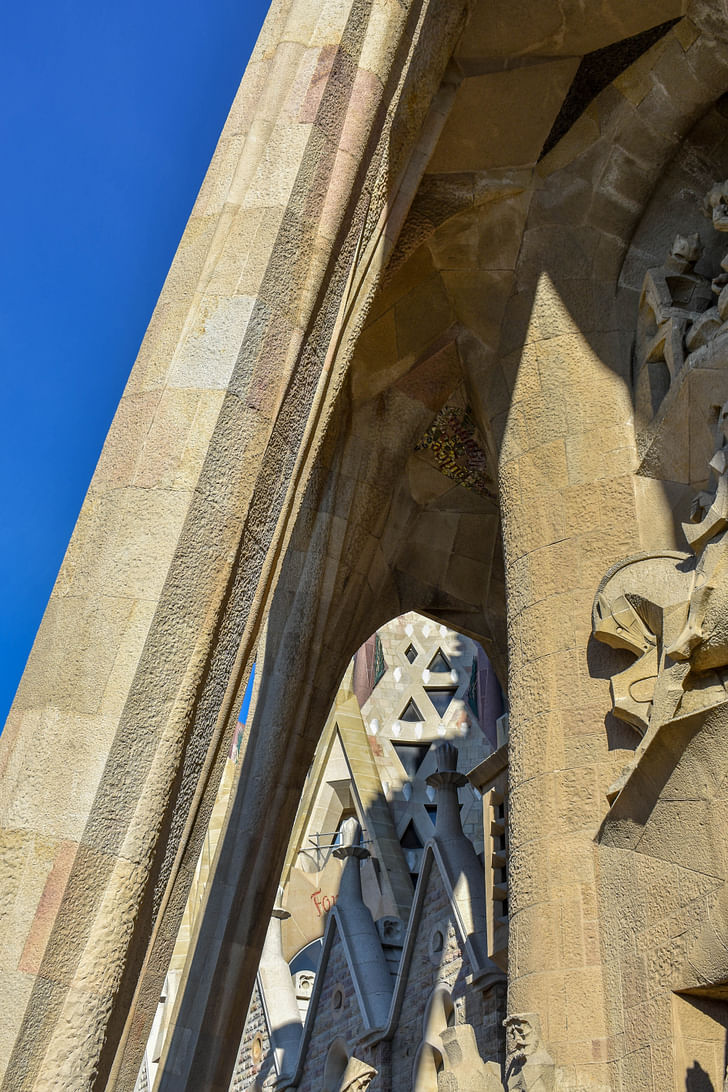

For our new series Iconic Buildings, we speak to people who live or work in buildings of architectural significance. Is their exposure to an architectural wonder on a daily basis a source of inspiration or simply part of the backdrop?
This time, we got the opportunity to visit the Sagrada Família, one of the most iconic buildings in the world, still being built despite construction starting over 135 years ago. At the time of Gaudí's death, less than a quarter of the project was complete, finally the project is scheduled to be finished in 2026 marking the centenary of his death.
We spoke to David Puig, an architect at the Sagrada Família in Barcelona.
What do you do at the Sagrada Família? How long have you been working there?
I've been an architect in the Projects Department at the Sagrada Família for 9 years now.
Did the building influence you in accepting the job?
Absolutely. Working on such a characteristic building is a once-in-a-lifetime experience. I started here doing a research project on the evolution of Gaudí's project for the temple.

What does the Sagrada Família represent to you? And what does it represent to the people of Barcelona?
For me, and for the people of Barcelona, the Sagrada Família is a symbol that is now known worldwide.
Do you enjoy working on such an iconic building?
Yes, I enjoy it a lot. Gaudí designed a sensational building that has many different layers of readings. You always discover new details.


What do you like best about the Sagrada Família? Do you prefer the design side of architecture or construction?
What I like best is the challenge of actually building a project designed by a genius nearly one hundred years ago. Our situation is unique and we work on the whole process, from architectural design to final construction, so we can't see them as different areas.
I'm particularly fond of autumn when it is much calmer. Early in the morning, at sunrise, you feel like you're in a truly unique setting.


Do you have a favourite lunch spot?
Yes, the Nativity façade, which Gaudí left as an example of how work on the temple should continue.
What is your favorite time of year at the temple?
I'm particularly fond of autumn when it is much calmer. Early in the morning, at sunrise, you feel like you're in a truly unique setting.


Does the building impact your job?
Yes, undoubtedly. Nowadays, it isn't common for architects to devote such a long period to one building like we do. The fact that it is such a fascinating project makes it easy to get excited about your work everyday, without it becoming monotonous.
On a personal note, it is highly fulfilling to participate in the final stages of a project designed by an architectural genius more than 100 years ago and, with my colleagues, make our contribution to the work of our other colleagues today and in past generations, which is something that probably happens in very few places in the world currently

All of the Iconic Buildings we have previously featured are completed buildings — construction on the Sagrada Família started 135 years ago and is due to be completed in 2026. What is it like working on such an iconic building that is not even completed and being a part of the final stages of such a prolific project?
Working on a building that broke ground in 1882 and is still under construction is a unique experience. With a more conventional building, you could see the whole construction cycle (from beginning to end), but normally from one very specific point of view (representing the owners, technical project or developers, etc.). Given the unique nature of this building, this is inverted and you only get to participate for a short period of time — compared to the construction process as a whole — but get a first-hand look at how the figures we mentioned interact. On a personal note, it is highly fulfilling to participate in the final stages of a project designed by an architectural genius more than 100 years ago and, with my colleagues, make our contribution to the work of our other colleagues today and in past generations, which is something that probably happens in very few places in the world currently.


Is there anything you don't like about the building?
No, Gaudí designed a fascinating project in which everything has its purpose.
What influence did Gaudí have on you when you were training to be an architect? What do you think his legacy is?
When I was studying, Gaudí was seen as an architect of the past — tied to the Modernism movement — but he had a huge impact on me because he was able to find ingenious solutions that stood out remarkably from what many other architects of the time were doing. Analysing it even deeper, he combines modernity and tradition in a way that is still applicable today. A good example of this would be the last solution he designed for the naves, which have already been constructed. He was searching for new shapes and structures for his church, but also for something that could be built using traditional techniques. The solution was to use ruled geometry — known in theoretical circles but an innovation applied to architecture — because it could be built using straight guidelines — straight edges and strings — traditionally used by builders.
If you stopped working at the temple, what would you miss the most?
I would miss the special relationship I've forged with such a special building, which I think is irreplaceable today.

Ellen Hancock studied Fine Art and History of Art at The University of Leeds and Sculpture at Mimar Sinan Fine Arts University in Istanbul.Now based in London she has a keen interest in travel, literature, interactive art and social architecture.
No Comments
Block this user
Are you sure you want to block this user and hide all related comments throughout the site?
Archinect
This is your first comment on Archinect. Your comment will be visible once approved.